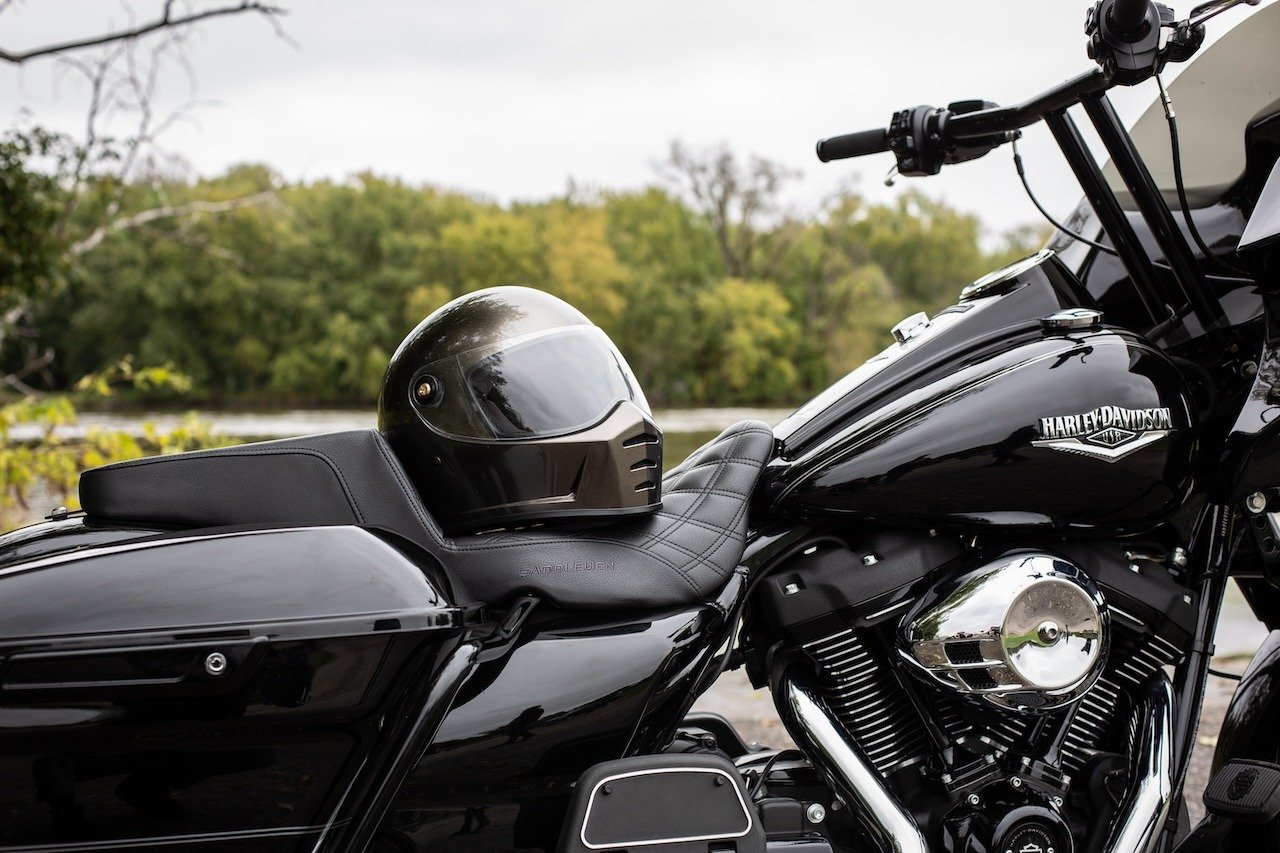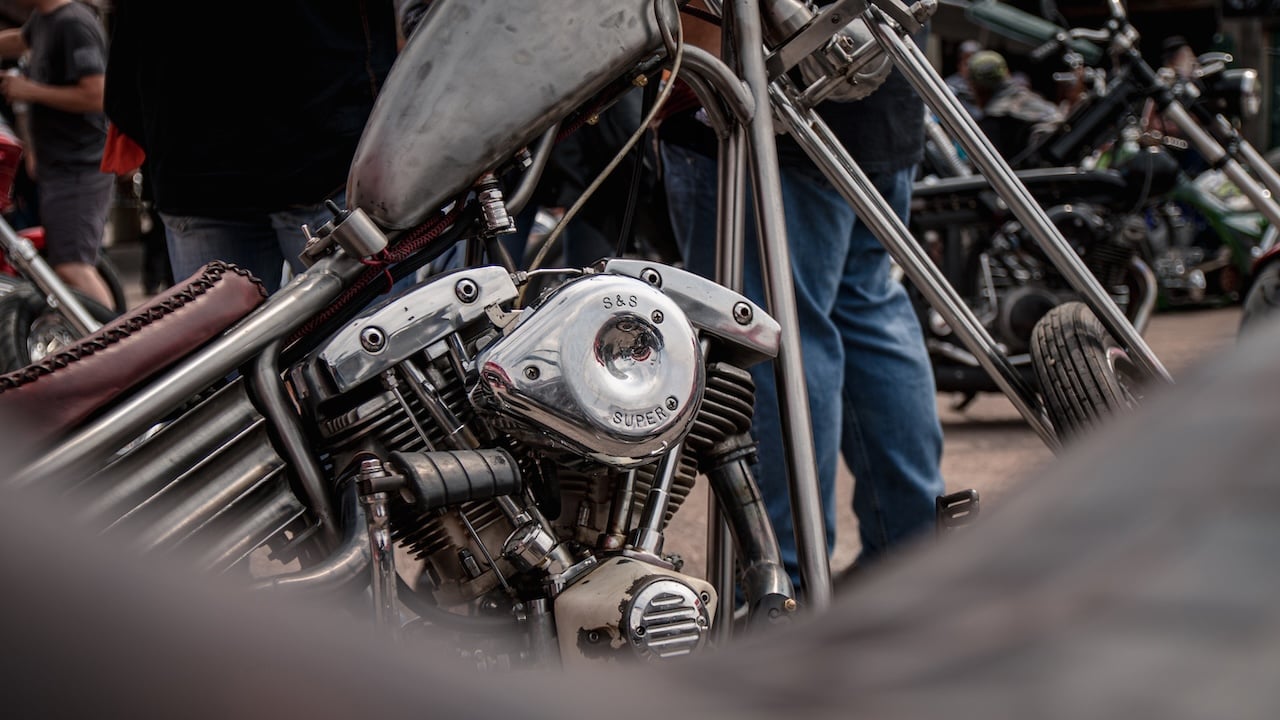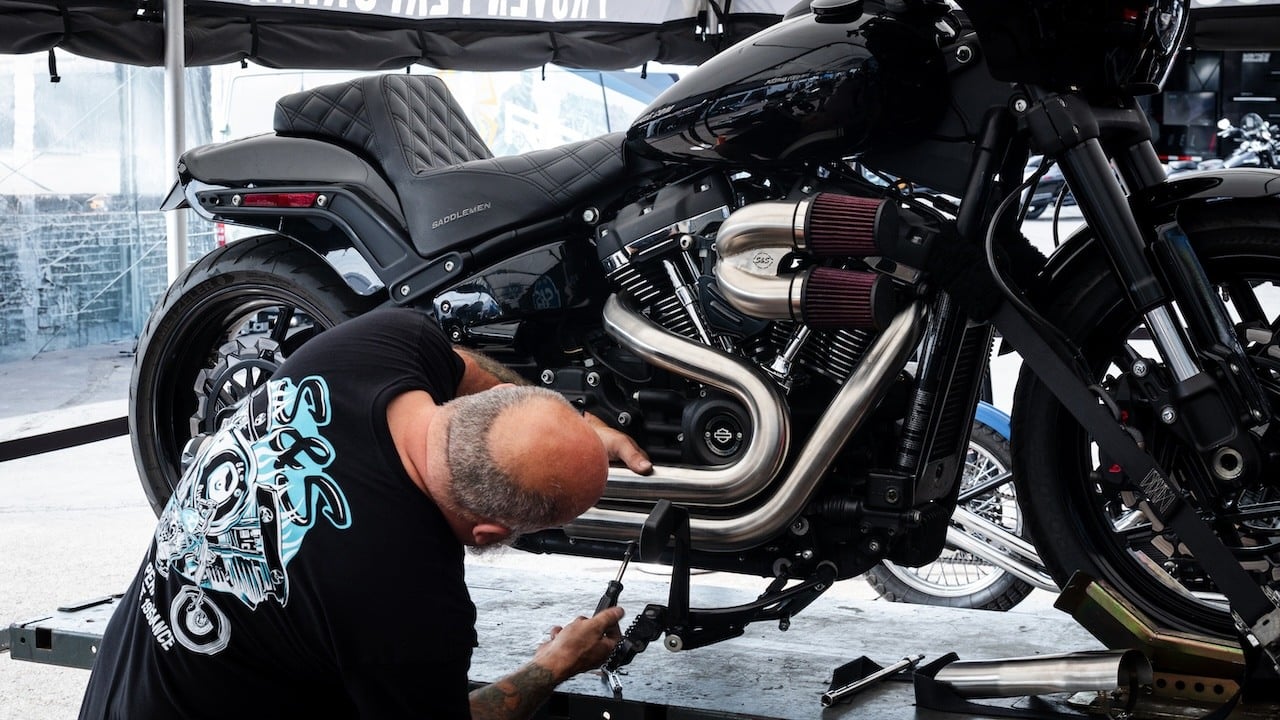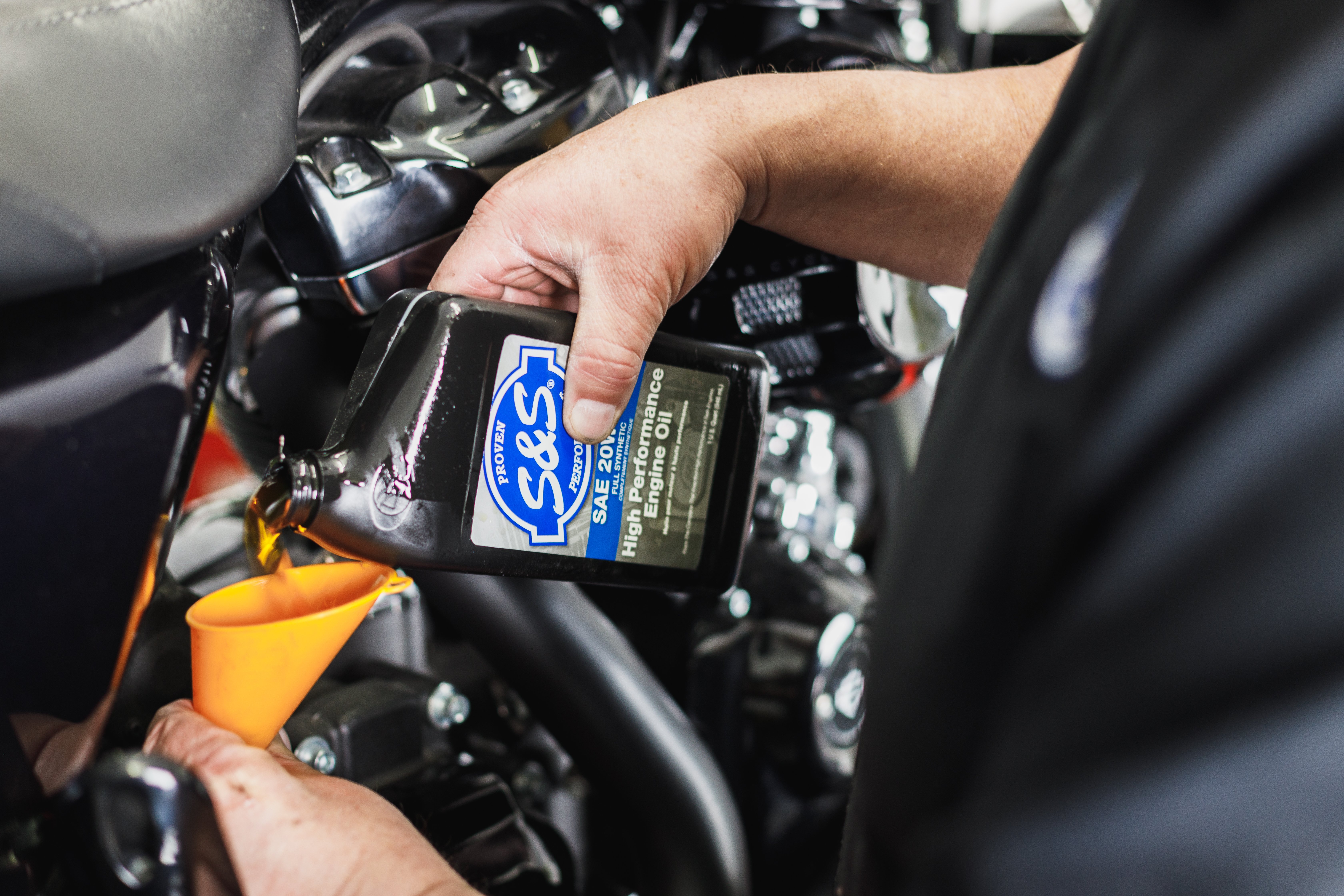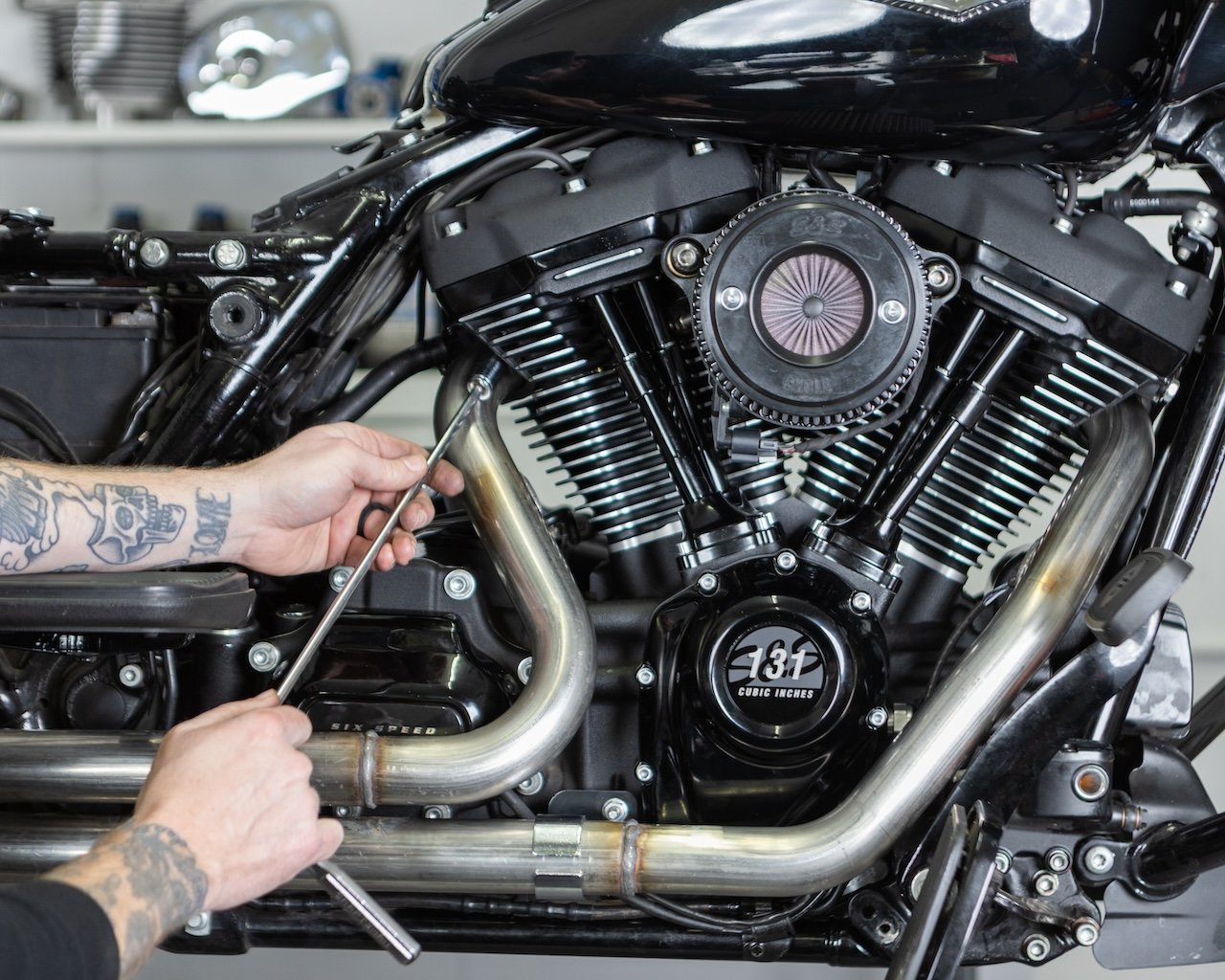
Once the temperatures drop and frost starts to creep in, that’s a good sign that it’s time to store your bike for the winter. But don’t just park it in your garage and call it a day: you should winterize your motorcycle. Winterizing your bike involves a lot more than just stowing it away. In this guide, we’ll take you step-by-step through storing your motorcycle for winter so that it stays in excellent condition and runs smoothly once the weather warms up again.
Why You Should Winterize Your Motorcycle
You might be wondering why you should winterize your motorcycle at all. Winterizing your motorcycle protects it from harsh winter conditions that can wreak havoc on its appearance and performance.
Here are a few specific reasons why winterizing your motorcycle is wise:
Corrosion prevention
Depending on where you live, winter conditions often bring moisture, salt, and other corrosive elements. You can apply protective coatings to vulnerable parts like exhaust pipes and metal surfaces to prevent corrosion when winterizing your motorcycle. Additionally, using a protective wax or coating on your bike’s paint and finish helps shield it from the elements.
Fuel system protection
Stabilizing the fuel with an additive helps prevent varnish and gum formation in the fuel system during prolonged storage. This helps extend the life of the fuel system and ensures that your motorcycle will start easily when the weather breaks, and you're ready to use it again.
Battery maintenance
Cold temperatures can lead to a loss of charge in the battery. Removing and storing the battery in a cool (not cold), dry place or using a battery maintainer helps extend its life and ensures that your motorcycle starts reliably once springtime rolls around.
Tire preservation
Proper tire inflation and periodic rotation prevent flat spots and maintain tire integrity, especially if your motorcycle is on a stand. Inflated tires also provide better support to the motorcycle's weight during storage.
Oil and fluid condition
Changing the oil and topping off fluids before winter storage helps remove contaminants and protects the motorcycle's internal components. Fresh oil prevents corrosion and maintains proper lubrication.
Freeze prevention
Winterizing your motorcycle helps prevent fluids like coolant from freezing, which could lead to damage. Ensuring the coolant is at the right concentration for winter temperatures is crucial to prevent freezing.
Preventing rodent damage
When stored, motorcycles can attract rodents seeking shelter. Sealing openings and using pest deterrents can help prevent damage caused by rodents nesting in your bike.
General maintenance
Winterizing your motorcycle allows you to perform general maintenance checks and address any issues before they become more significant problems. This ensures your bike is in good condition when you're ready to ride again.
When Should You Winterize Your Motorcycle?
Where you live will determine when you winterize your bike. In general, you should winterize your motorcycle when it consistently feels like winter with freezing temperatures or snowfall.
However, you don’t have to wait that long to winterize your motorcycle. If you usually stop riding your bike once fall rolls around, that’s a great time to begin winterizing and store your bike for the winter.
How Much Does it Cost to Winterize a Motorcycle?
If you perform the winterization tasks yourself, the costs can range from $80-$250, depending on the supplies and materials you’ll need to purchase. Here are some potential costs for DIY winterization:
- Fuel stabilizer: $10 to $20
- Oil and oil filter (if an oil change is needed): $20 to $50
- Cleaning supplies: $10 to $30
- Battery maintainer: $20 to $50 (if you don't already have one)
- Motorcycle cover: $20 to $100
If you take your motorcycle to a dealership or a professional mechanic for winterization, the costs will include labor charges in addition to the cost of materials. Costs for professional winterization can vary widely based on location, the specific services performed, and the hourly rate of the service provider. A professional winterization service might range from $100 to $300 or more.
15 Steps to Winterize Your Motorcycle
Follow these steps to properly winterize your motorcycle to keep it in excellent condition so you can resume riding with no issues in the spring.
1. Inspect your bike and make repairs.
Take the time to inspect your motorcycle for any needed repairs. Address issues before storing it to avoid complications later. Though much of the winterization process covers general motorcycle maintenance, you should address any other significant problems before storing it for the season.
2. Clean your motorcycle.
Leaving dirt on your motorcycle over the winter could cause rust and corrosion, so detailing your motorcycle is a must before winter. Wash and clean your bike thoroughly to remove dirt, grime, or salt accumulated during riding. Apply a good automotive wax to all painted, chrome, or fiberglass surfaces for extra protection.
3. Change the oil and filter.
Next, change your motorcycle’s oil and filter. It’s always best to change your oil when the engine is warm because warm oil drains faster and more thoroughly, so you may want to take it for a ride beforehand. Our oil change kits are convenient and easy to use if you’ve never changed motorcycle oil.
Optional step: Fog the engine.
Fogging coats the bike engine’s internal systems with oil, reducing the risk of corrosion. The process never hurts your bike, though some gearheads and mechanics find it unnecessary.
To fog your engine, get your bike outdoors (the process generates a lot of smoke). Remove the air filter, then spray fogging oil into the air intake as you gradually increase the idle speed. Keep it at about 2,000 RPM and stop spraying only when the engine cuts out. Reinstall the air filter once complete.
4. Stabilize the fuel and fill the tank.
When storing your motorcycle for an extended period, store it with a full tank of gas, but with some precautions. A gas tank minimizes the air in the tank, reducing the space for condensation to form. Condensation can lead to water in the fuel, causing issues like rust and corrosion in the tank and fuel system. Fuel can act as a protective barrier for the metal components in the tank and fuel lines.
You should also add a fuel stabilizer when storing your motorcycle for an extended period.
- Select a fuel stabilizer that is suitable for long-term storage.
- Follow the manufacturer's instructions regarding the correct amount to use based on the size of your gas tank.
- Add the fuel stabilizer to the gas tank and run the engine for a few minutes to allow the stabilized fuel to circulate through the entire system.
Fuel-injected Harleys
If you have a fuel-injected Harley, stabilizing the fuel is the way to go. Using the product directions, mix some fuel stabilizer into your gas tank. We recommend saving enough stabilizer to mix an additional jerry can. Keep in mind that fuel stabilizer typically has a two-year shelf life, so keep track of how old your fuel stabilizer is.
Carburated Harleys
If you’re winterizing any pre-1996 Harley or a pre-2008 model with a carburetor, drain your fuel tank first, then the carburetor itself. To drain the carburetor, find the petcock or drain screw and place a rag underneath. Then open and let the fuel drain out. Be sure to close the petcock or reattach the drain screw once the gas is out of the carburetor.
5. Check the pH balance of your antifreeze.
Antifreeze contains corrosion inhibitors that help protect the metal components of your motorcycle's cooling system. These inhibitors work optimally within a specific pH range. Still, if the pH becomes too high or too low, it can compromise the effectiveness of the corrosion protection, leading to increased wear and potential damage to the cooling system.
Use a test strip to see if your antifreeze is still healthy. Fluid and coolant test strip kits contain strips with a reactive band that will change in color based on the fluid's properties. Simply touch the fluid, wait for the color to change, and then compare the color to the guide provided in the kit.
6. Top off fluids.
Ensure all fluid levels, including coolant and brake fluid, are topped off. Keeping the fluid levels at the recommended levels helps maintain the integrity of seals and gaskets. If fluids are low, there's a higher risk of air entering the system, leading to the deterioration of your seals over time.
Topping off the coolant ensures that the cooling system is filled to the proper level. This is crucial in preventing freezing during cold winter temperatures, which could cause damage to the engine.
Brake fluid absorbs moisture over time, leading to decreased braking performance and potential damage to brake components. Topping off the brake fluid helps maintain its integrity and effectiveness.
7. Check the electrolyte levels of your battery.
If your motorcycle has a maintenance-free battery, it's sealed and doesn't require topping off. However, if your battery has removable caps, check the electrolyte levels and top off with distilled water, if necessary, before storing.
8. Disconnect your battery and hook it up to a flow charger.
When left connected to the motorcycle, batteries will rapidly deteriorate in cold weather, and they might even need replacement in the spring. It’s best to disconnect the battery and remove it from your motorcycle. Store it in a cool, dry place, preferably on a battery maintainer, to prevent it from losing charge. A modern flow charger (sometimes called a “tender” or “smart charger”) will allow your battery to drain to a healthy point before charging it back up to a healthy point.
9. Check and lubricate moving parts.
Any metal pivot point should be lubed up before storing your bike. Lubricate moving parts such as the chain, cables, and any exposed metal surfaces to prevent rust. Don’t forget the kickstand, brake levers, clutch levers, and anything else that pivots or folds.
10. Lightly coat the exhaust pipes in WD-40.
Apply a light coat of WD-40 or a similar rust inhibitor to the exhaust pipes to prevent corrosion. Consider using exhaust pipe wraps designed to protect pipes from the elements. These can provide an additional insulation layer and shield the pipes from moisture, salt, and other environmental factors. Just don’t leave them on for too long. Exhaust wrap, if left on for too long, can cause rust, holes, and failure in the exhaust system.
11. Check your tire pressure.
Inflate the tires to the recommended pressure specified in your motorcycle's owner's manual. Cold temperatures can cause tire pressure to drop, so starting with the correct pressure is essential. Well-inflated tires help prevent flat spots and maintain their structural integrity during storage.
12. Elevate your bike.
Elevate your bike if possible, especially if your bike has more expensive performance tires. Something like a SnapJack will keep your motorcycle off the ground and protect the tires from getting flat spots or deteriorating from the concrete floor. Consider rotating the tires periodically during storage if your bike is on a stand or lift. This helps distribute the weight more evenly and reduces the likelihood of flat spots.
13. Store your bike somewhere dry.
Store your motorcycle in a dry place away from direct sunlight. Prolonged exposure to sunlight can lead to degradation of rubber, paint, and other surfaces. If possible, keep it off the ground to prevent moisture accumulation.
14. Block the tailpipe to keep rodents away.
Your motorcycle’s muffler is the perfect winter home for mice and other critters because it’s warm, dry, and relatively protected throughout the winter. We’ve seen mice in air intakes, too. You don’t want mice eating away at the interior of your bike—and you don’t want them building nests and leaving behind droppings.
Block the tailpipe and the air intake with some steel wool inside a resealable plastic bag to keep the rodents away. The steel wool stops the rodents, and the plastic bag keeps the steel wool from coming loose and damaging interior parts.
15. Cover your motorcycle.
Even if you store your motorcycle indoors, a motorcycle cover is wise, but it is especially crucial when you have to keep your bike outdoors. Use a breathable motorcycle cover to protect it from dust and other elements. A motorcycle cover helps shield your bike from rain, snow, sleet, and other forms of moisture. Moisture can lead to corrosion, rust, and damage to various components, including the frame, exhaust system, and electrical parts.
Winterization FAQs
Is winterizing your bike a must?
It’s always a good idea to winterize your motorcycle if you live where it gets cold.
Riding in the winter can kick up sodium chloride (road salt) into your engine, introducing rust and corrosion to hard-to-clean areas. Additionally, if it gets cold enough, the ethanol in modern gasoline can decompose and separate from the gasoline, clogging up your jets or rusting your gas tank.
So, if your bike will sit for the coldest winter months, you definitely want to winterize first. If you plan on riding throughout the cold months, you won’t fully winterize (though you should still take a few steps to protect your motorcycle).
Is it bad to leave your motorcycle out in the winter?
Avoid leaving your motorcycle out in the winter. If it has to stay outside, reduce exposure to sun and moisture as much as possible. Prolonged exposure to direct sun can cause the vinyl on your seat to corrode and will age any plastics (even when it’s cold outside). So cover your bike if you must leave it outdoors.
Additionally, moisture wreaks havoc on anything it touches. Snow that melts and then refreezes repeatedly can damage any number of systems or parts on your motorcycle. And if road salt enters the picture, things go from bad to worse!
So, keeping your motorcycle dry in the winter is a must. Our #1 recommendation for storing your bike outside through the winter is to invest in a quality motorcycle cover appropriately fitted to your motorcycle.
Should you store your motorcycle without gas?
Addressing gas left in the tank is one of the two most essential winterization practices (the other is addressing your battery). How you handle gas during winterization depends on whether your motorcycle has a carburetor or a fuel injection system.
For example, modern (2008 model year or newer) Harleys are all fuel-injected. If your motorcycle is fuel-injected, you probably don’t want to drain the gas. Fuel injectors are notoriously difficult to clear, and you’ll probably not be able to get all the fuel out of the system. Instead, you’ll want to add some fuel stabilizer.
If you ride a carbureted older Harley (any bike before the 1996 model year, and some from 1996 through 2007), draining the gas is a good option. Most carbureted bikes have a petcock that you can open to drain all the fuel from your system.
The bottom line–if you can get your entire fuel system dry, you should consider storing your motorcycle without gas. If you can’t, then add some fuel stabilizer instead.
‘Tis the Season for Winterization
Winterizing your motorcycle is extremely important to maintain the condition of your ride, so don’t skip it this season. These steps should keep your bike in excellent condition through the winter so you can get back on the road once the temperatures rise.
You might also like:


